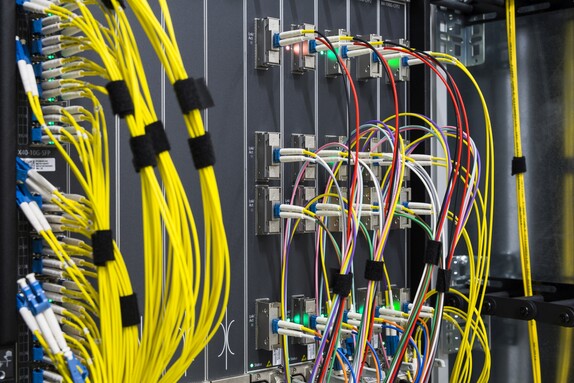Unveiling the Tech Wizardry: DE-CIX’s Data Flow Mastery
Have you ever wondered how DE-CIX manages to keep its platforms running smoothly while staying ahead of the game in the ever-evolving tech landscape? There’s a lot that happens behind the scenes, from innovative product development to cutting-edge infrastructure projects. In this glimpse behind the curtain, we’ll explore the magic of the latest-generation hardware that powers DE-CIX, ensuring reliable peering and interconnection services for its valued customers.
Balancing New Interconnection Services with Platform Maintenance
Ensuring that the physical platform meets the surging demands for data traffic is crucial, and new hardware is the key to achieving higher data transmission rates. In the past, customer demand often outpaced what hardware suppliers could deliver, but this trend has shifted in recent years with innovations like Nokia’s FP5 network processors, designed to support a staggering 800 Gigabit Ethernet (GE).
One major ongoing project involves phasing out the XRS-40 routers, introduced in 2013 when the Apollon platform was launched. These colossal wardrobe-sized routers could handle 64 terabits per second (Tbps) of data. The new devices, however, boast an impressive 216 Tbps capacity, over three times that of their predecessors. Simultaneously, the introduction of the new 100G LR optics is underway, capable of transmitting 100 gigabits per second (Gbps) of data via a single laser beam.
In addition to enhancing hardware, DE-CIX is committed to offering new connectivity services to its customers, leveraging virtual interconnection services that can be quickly deployed to platforms across various locations. A dedicated research and product management team continuously develops and introduces services, such as the recently launched Cloud ROUTER.
Always Reserving Capacity for Growing Traffic
DE-CIX’s major hubs, like Frankfurt, witness annual traffic growth rates ranging from 20% to 30%. Meanwhile, newer locations like Madrid experience even higher growth figures, occasionally exceeding 100% per year. Unprecedented events, such as the pandemic-induced lockdown, caused traffic to surge by 30% in just one week.
To manage this growth effectively, DE-CIX consistently maintains adequate redundancies and capacities within its network. When 63.5% of the existing capacity is reached, capacity expansion is initiated, ensuring that 36.5% remains as free capacity to accommodate both redundancy and anticipated traffic growth. Careful planning, often occurring a year in advance, is essential, as hardware orders typically take three months to fulfill, followed by installation, testing, and deployment.
Minimising Downtime for Customers
When implementing network changes, such as router replacements, minimizing customer downtime is a top priority. Rigorous risk management is in place to prepare for all potential scenarios, ensuring the team is ready to respond swiftly. Router swaps typically occur during the night when customers are least affected, involving the reconnection of hundreds, sometimes thousands, of fiber optic cables, which can be time-consuming.
While it’s impossible to eliminate all risks, it’s exceptionally rare for DE-CIX to fail in restoring service to a customer. The team is equipped to address unforeseen challenges, such as malfunctioning cables, ensuring that service can be promptly reverted to its previous state. Spare resources are readily available to address such situations. During the EVPN project, rollback scenarios were carefully prepared, allowing a quick restoration of the previous configuration in case the new one didn’t perform as expected.
DE-CIX’s unwavering commitment is clear: the availability of interconnection services for its customers is paramount, ensuring a seamless and uninterrupted experience in the dynamic world of data connectivity.



